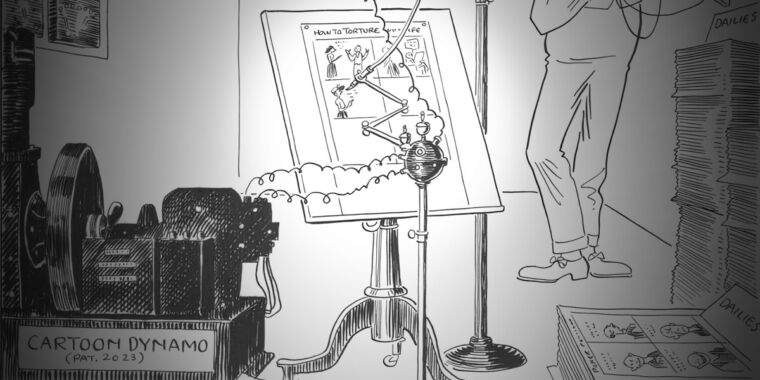
In 1923, an editorial cartoonist named H. T. Webster drew a humorous cartoon for the New York World newspaper featuring a fictional 2023 machine that would generate ideas and automatically draw them as cartoons. It was a precursor to recent advances in AI image synthesis, a century later, which can actually create works of art automatically.
The vintage cartoon bears the caption “In the year 2023 when all our work is done by electricity.” It shows a cartoonist standing at his drawing table making plans for social events, while an “idea dynamo” generates ideas and a “cartoon dynamo” renders the artwork.
Interestingly, this separation of labor is similar to our neural networks today. In the actual 2023, the “idea dynamo” would likely be a large language model like GPT-3 (albeit imperfectly), and the “cartoon dynamo” most closely resembles an image synthesis model like Stable Diffusion.

In 2014, the blog Paleofuture profiled Webster’s work and this cartoon in particular, noting that in the early 1920s only 35 percent of Americans had electricity in their homes. Electricity and the devices it powered represented a radical new way of getting things done. Yesterday someone on Reddit noticed the cartoon again and it went viral on social media.
Interestingly, despite the rapid advances in generative AI technology over the past two years, image synthesis models are not yet as good at line art, as a cartoonist named Douglas Bonneville often notes on Twitter.
But improvements in AI models that master hand-drawn cartoons may be just around the corner. And unlike other early 20th-century future projections that involved personal butterfly wings and city-wide networks of pneumatic tubes, Webster’s prediction seems pretty close to the mark.

